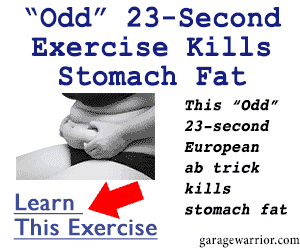Achieving well-developed triceps and biceps is essential for upper body strength, functional performance, and aesthetic balance. This guide outlines five targeted exercises—three for triceps and two for biceps—that optimize muscle growth through proper form, effective activation, and progressive overload. Each exercise includes step-by-step instructions, benefits, and tips to maximize results and minimize injury risk.
1. Close-Grip Bench Press (Triceps)
**Instructions**:
1. Lie flat on a bench with feet planted firmly.
2. Grip the barbell slightly narrower than shoulder-width (6–8 inches apart).
3. Unrack the bar, lower it to your mid-chest, and press upward until arms are fully extended.
**Benefits**:
– Emphasizes the lateral and medial heads of the triceps.
– Engages the chest and anterior deltoids as secondary muscles.
– Promotes strength and hypertrophy through compound movement.
Tips for Proper Form:
– Keep elbows tucked close to your torso to isolate triceps.
– Avoid arching your lower back; maintain a neutral spine.
– Use a controlled tempo to maximize time under tension.
2. Tri-cep Dips (Triceps)
**Instructions**:
1. Position yourself on parallel bars, arms fully extended.
2. Lower your body by bending elbows to 90 degrees, leaning slightly forward.
3. Push through your palms to return to the starting position.
**Benefits**:
– Targets all three tricep heads, particularly the lateral head.
– Enhances upper body stability and functional strength.
– Adjustable difficulty (add weight via a belt for progression).
**Tips for Proper Form**:
– Avoid descending too low to prevent shoulder strain.
– Maintain a forward lean to emphasize triceps over chest.
– Control the eccentric (lowering) phase to avoid momentum.
3. Overhead Tri-cep Extension (Triceps)
**Instructions**:
1. Sit or stand holding a dumbbell with both hands.
2. Press the weight overhead, then lower it behind your head by bending elbows.
3. Extend arms fully to return to the starting position.
**Benefits**:
– Isolates the long head of the triceps for maximal stretch and growth.
– Improves shoulder mobility and stability.
– Suitable for unilateral (single-arm) variations to address imbalances.
**Tips for Proper Form**:
– Keep elbows close to your head; avoid flaring outward.
– Engage your core to prevent excessive lower back arching.
– Use a full range of motion for optimal muscle engagement.
4. Barbell Bicep Curl (Biceps)
**Instructions**:
1. Stand upright, gripping a barbell with an underhand, shoulder-width grip.
2. Curl the bar toward your shoulders while keeping elbows stationary.
3. Slowly lower the bar to full extension.
**Benefits**:
– Directly targets the biceps brachii and brachialis.
– Allows heavy loading for progressive strength gains.
– Enhances forearm and grip strength.
**Tips for Proper Form**:
– Avoid swinging or using momentum; maintain strict form.
– Squeeze the biceps at the top of the movement.
– Keep shoulders relaxed and back neutral.
5. Hammer Curl (Biceps/Brachialis)
**Instructions**:
1. Hold dumbbells in a neutral (thumbs-up) grip.
2. Curl the weights toward your shoulders while maintaining the neutral grip.
3. Lower the dumbbells with control.
**Benefits**:
– Targets the brachialis and brachioradialis, adding thickness to the upper arm.
– Reduces wrist strain compared to supinated grips.
– Improves functional grip strength.
**Tips for Proper Form**:
– Keep elbows pinned to your sides throughout the movement.
– Focus on a slow eccentric phase for muscle damage and growth.
– Avoid shrugging or leaning backward.
Consistency, progressive overload, and attention to form are critical for tricep and bicep development. Incorporate these exercises into a structured upper-body routine 2–3 times weekly, allowing 48 hours of recovery between sessions. Pair this training with adequate protein intake (1.6–2.2g/kg of body weight daily) and sufficient sleep to optimize muscle repair and growth. Avoid overtraining by gradually increasing weight or volume, and consider consulting a fitness professional to tailor programming to your goals. By prioritizing technique and dedication, you will achieve stronger, more defined arms and enhanced upper-body performance.


